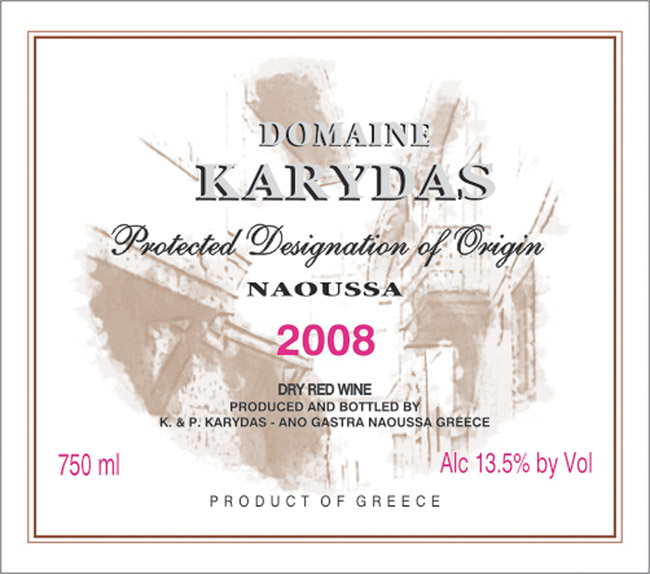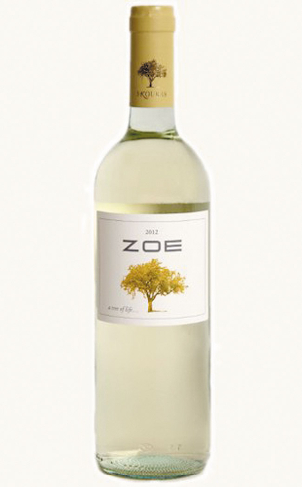A Taste Of Greek History For Oenophiles
I have come to expect that learning about wine has much to do with history. This day I am immersed in the history of an island nation; a history that harkens back to the time before Christ. I am enjoying a wonderful presentation and tasting with Ted Diamantis of Diamond Importers, a specialty wine importer of wonderful Greek wines.
From one island to another, these wines enlightened my palate. They are not only engaging but truly delicious.
mw-vino-050714-001
And lest you say, “It’s all Greek to me,” and I lose you here, I assure you these wines are worth the read and purchase.
Ted says 30 percent of the English language is rooted in the Greek language. That said, perhaps the biggest challenge to learning about Greek wines is pronouncing the names of grapes and producers. But if I can do it, so can you.
The first wine that really catches my palate is from the island of Crete. The 2011 Douloufakis Vidiano ($14) comes from a vineyard around 2,000 feet in elevation.
Vidiano is the name of the grape and sounds pretty much like it looks. It explodes with a very floral, peachy, nectarine bouquet. It is light bodied and has a light, but not overly pungent floral finish.
This is not the most complex wine of the tasting, but there is an inef-fable, satisfying flavor, almost umami like.
The Douloufakis winery is a tiny one with a total production of just a few thousand cases of wine, and this one is quite a gem for white wine lovers.
Speaking of gems in Greece, Domaine Skouras must be included in the conversation of best wineries in all of Greece. This winery has several tiers of quality, and true to form I found something that I really enjoyed in each. The 2012 Domaine Skouras “Zoe” White ($13) comes from the Peloponnese – Arcadia, to be exact.
The vineyards are at 2,500 feet above sea level. This is its entry blend of 40 percent Moschofilero and 60 percent Rhoditis, and it reminds me of longan (aka dragon’s eye fruit) with a slightly floral component but bent more on citrus and refreshing zestiness.
It is airy, and I can see this wine as an aperitif as well as a pair with salads and anything – I mean anything – from the sea. There is a whiff of sea breeze here as well.
Just as compelling is its 2011 “Zoe” Red ($13). which comes from Nemea in the south, which is warmer and more conducive to red varieties.
I learned that Nemea is the world’s oldest appellation, being defined somewhere around 400 B.C.
This more current example blends 90 percent Agiorgitiko with 10 percent Cabernet Sauvignon. It presents itself in fruit a bit more like Pinot Noir, with plenty of red berry fruit, including wild cherry and raspberry. It is super easy to drink, with medium tannin at most and without any bitterness.
The next level up is the 2011 Skouras “St. George” ($21), which is 100 percent Agiorgitiko that has been barrel-aged in first-, second- and third-fill French oak barrels so as not to diminish the essence of the fruit with oak.
This has definite structure, something akin to California Cabernet but with better acidity for balance, and no wonder – the grapes are from 100 percent estate vineyards at 2,600 feet elevation. Its top of the line red is the 2008 Skouras “Megas Oenos” ($26), which translates to “Grand Vin,” like French Bordelaise.
This is 80 percent old vine (80 years old) Agiorgitiko and 20 percent Cabernet Sauvignon aged in French oak for 22 months. This wine needs time as it is dominated by structure, but there is a heart of fruit that bolsters all the tannin. I would love to taste this wine in a decade or more.
And perhaps my favorite red wine of the whole tasting was from the tiny Karydas Estate (it produces a total of 1,000 cases of wine per year). Its 2010 Karydas Xinomavro (kzeenomavro) ($25) is the name of the grape and also is produced in Naoussa on deep limestone soils.
When I first took a whiff of it, I could have sworn I was drinking mature Nebbiolo. There was mineral stone, tart cherry, roses, cinnamon and cloves.
It does show a touch of new oak influence as it is aged 20 months in French oak, 20 percent of it being new. But when I put it in my mouth, the wine screams of youthful fruit, much more fresh and lively than the nose. It is veiled with tannin, much the same quality of a top Nebbiolo. This is a wine that can handle the richest of proteins with no problem; it is not a shy wallflower of a wine.
And another thing: These wines, especially the whites, are phenomenal pairs with our local cuisine, especially that which comes from the ocean. But don’t stop there – salads, cheeses and more European fare are just as great with these wines.
Now if I can only convince Ted to take me to Greece for another history lesson …
Roberto Viernes is a master sommelier.
rviernes@southernwine.com
Twitter: @Pinotpusher







